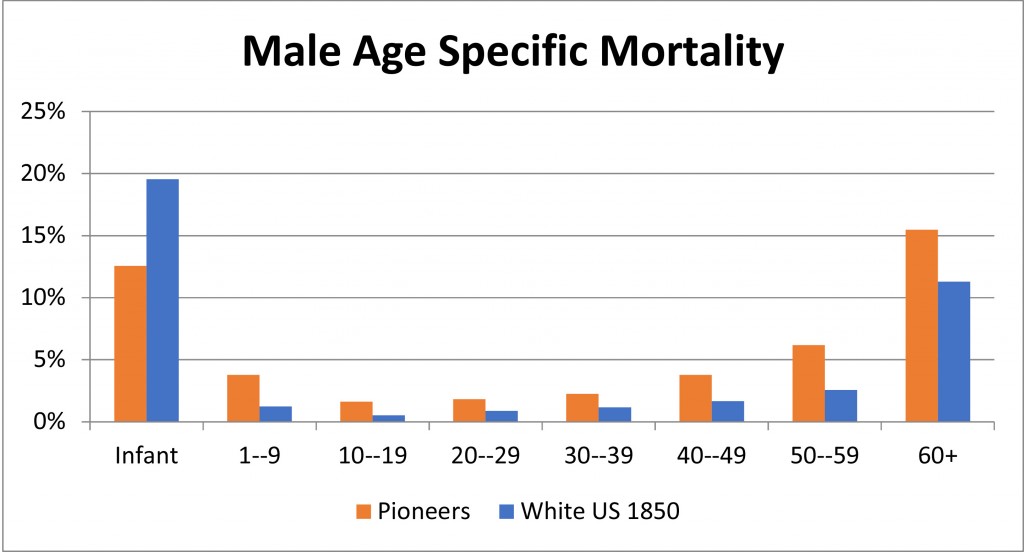Study Reveals New Findings About Mormon Pioneer Mortality Rates
Recently, statisticians at Brigham Young University joined forces with Mel Bashore, a historian, to study the mortality rates of Latter-day Saint pioneers. What they found may surprise many modern Latter-day Saints who have ever participated in a handcart trek.
According to an article written by Sierra Naumu, the study found that death rates among Latter-day Saint Pioneers were not much higher than the death rate of other pioneers from the same time period. Bashore told Naumu,
[pull_quote_center]The whole Mormon trail movement that spanned 20 years was a really successful endeavor.[/pull_quote_center]
The research Bashore conducted with the BYU students included the study of 56,000 pioneer records from the years 1847-1868. Based on the number of deaths that happened on the trek, or within their first year of arrival in the West, they concluded that the mortality rate was 3.5 percent. Another, non-Latter-day Saint group also took a pioneer trek across the plains in 1850. The annual mortality rate of the national group was between between 2.5 percent and 2.9 percent.
Bashore and her team, including BYU professor Dennis Tolley, looked at journals and the history of some of the pioneer families so they could more accurately depict how many Saints participated in the trek, and how many died along the way. While some deaths were due just to common diseases from the time period, such as dysentery, many also died from accidents, such as being run over by the wagon or being accidentally shot.
[pull_quote_right]Those travelling with handcarts were presumably poorer, malnourished, and all sorts of other factors.[/pull_quote_right]
Naumu writes that many people believe the experience that the Willie and Martin companies had was normal for all companies, just because that story is told frequently as an example of pioneer hardship. However, this is not the case. The difference with these companies and the majority of the other companies is that Willie and Martin’s had late departures and traveled by handcart. In reality, however, only 5 percent of the Saints traveled by handcarts. Most made the trek using wagons which proved to be much safer. Those who used handcarts had a 4.5 percent mortality rate. Tolley said that this is largely due to the fact that “those travelling with handcarts were presumably poorer, malnourished, and all sorts of other factors.”
The researchers broke down their findings into two graphs, divided by gender, depicting the the Latter-day Saint pioneer mortality rates compared to the national pioneer mortality rates.


Explaining the graphs, Naumu writes “the gender breakdown of the Mormon immigrants that came over is quite balanced, with 26,615 females and 28,306 males. In conjunction with the balanced number of females versus males in the data, their mortality rate is also quite similar with females at 3.6 percent and males at 3.3 percent. Interestingly, almost half of the immigrants were under the age of 20, and the mortality rate for this age demographic was a surprisingly low 1.75 percent.”
The full study will be published in a future issue of BYU Studies. Read more about the mortality rates for Latter-day Saint Pioneers in Naumu’s article at byu.edu.


